Southern Lights put on a show for Chimu Adventures-Qantas flight
On an overnight flight to nowhere, the southern skies put on a spectacular show.
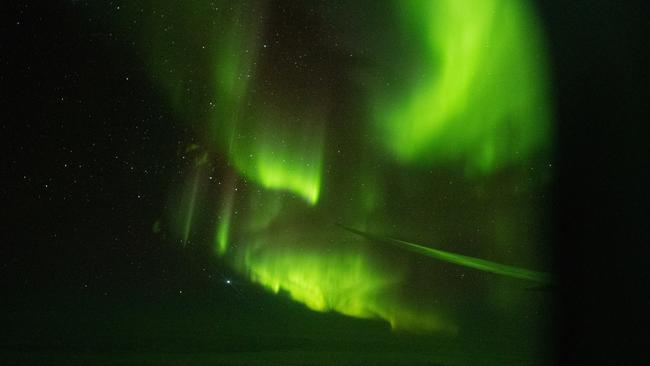
According to the traditional beliefs of Indigenous Australians, they are the spirits of the dead rising to the sky, or the sign of a great battle being waged across the heavens. The Maori of New Zealand think of them as the light reflected from the torches of their ancestors. In the northern hemisphere, they might represent babies who have died at birth, the ghosts of slain enemies or the glow from giants’ fires as they fish at night. Whichever way you look at the auroras – Borealis and Australis – they are spectacular, ethereal phenomena that travellers will cross the globe to witness, enduring sleep deprivation and extreme cold in their efforts to tick them off their must-see list.
To view the Southern Lights in the current climate, when almost all overseas travel is off limits, Australians could head to Tasmania or, thanks to the start of the trans-Tasman bubble, the farther reaches of New Zealand. There is another way, however; one that involves hopping on a plane for an overnight flight that departs at a civilised time and returns early the following morning. No down jackets or beanies are required, though the soft pillows and quilts of business class may provide comfort in the wee hours.
It’s a chance to see Aurora Australis without taking an international flight (and indeed to feel the light-headed fug of jet lag without the same). And so I take my window seat at the pointier end of a Qantas 787-9 Dreamliner at Sydney domestic airport for Chimu Adventures’ first Southern Lights by Flight “expedition” from Australia two weeks ago.
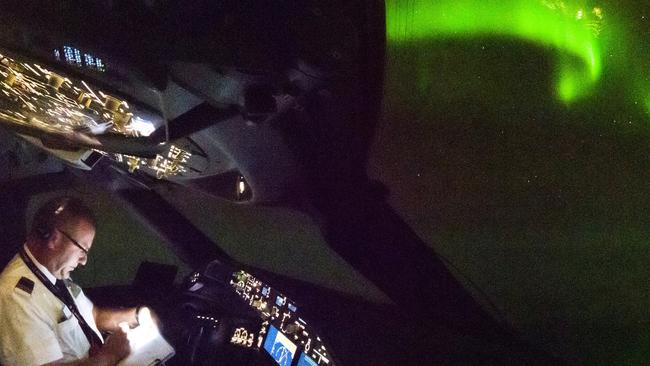
The atmosphere at the departure gate has been filled with anticipation, with many passengers (all masked, temperature-checked and COVID-cleared) wielding serious photography hardware and discussing ISO settings and shutter speeds with Chimu staff. I’ve brought my digital SLR too, but with minimal confidence in my camera skills I’ve also downloaded a long-exposure app on my smartphone (a smart move, as it turns out).
On the plane, which is full, everything feels weirdly familiar; we could be taking off for London or LA. In business class, Qantas staff serve champagne and inquire about dinner choices while passengers contemplate movies and chat with their neighbours.
But this is no ordinary flight. On board is Nicholas Tothill, an astronomer with multiple impressive qualifications under his belt in the fields of physics, radioastronomy and computational astrophysics. Assisting are the CSIRO’s principal research scientist, Grahame Rosolen, and astrophotographer David Finlay. On the flight deck are Qantas’s 787 fleet manager, Captain Lisa Norman, Captain Alex Passerini, and Tothill, who has gone through a lengthy process to gain permission to join the pilots up the front.

Chimu Adventures co-founder Chad Carey has 10 polar cruises to his name, eight to Antarctica and two to the Arctic, yet he has never seen an aurora because those trips are conducted in summer. Under normal circumstances, the Australian company would be taking tourists to South or Central America at this time of year. The pandemic has forced Carey and co to think outside the box. He sees the Southern Lights flights as a way to satisfy pent-up demand for adventure and for guests to have a once-in-a-lifetime travel experience they may otherwise have been unaware of.
“It’s really on our doorstep and the only reason people don’t realise it exists is because [unlike in places such as Norway] there’s no real land mass in that band where the auroras are,” he says.
‘We see sinuous ropes of light dancing before the stars, and sheer curtains wafting as though caught in a gentle breeze’
Over the PA, Tothill tells us he first saw an aurora lying on his back in the freezing cold, so he’s looking forward to seeing it in comfort. The ABC’s resident geek, Adam Spencer, happens to be a paying passenger on board and he interviews Tothill as we fly south towards the auroral zone, helping to demystify what we are about to observe.
Auroras occur when the seasonally strong solar winds collide with the Earth’s magnetic field more than 100km above the planet’s surface. Protons and electrons react with particles in the atmosphere, releasing energy as light – red from oxygen, blue from nitrogen. Green dominates since that’s the colour our eyes can see most readily. We’re told to expect aurora of any shape and size, from thin threads to broad sheets. Most importantly, because our eyes aren’t nearly as clever and sensitive as today’s SLR cameras, the colours are likely to be faint.
“It’s always moving and that’s possibly one of the most otherworldly things about it,” says Tothill.
About 2½ hours in, we’re informed aurora have been spotted ahead in shades of red and green, and the pilots adjust their course. A short while later, cabin lights and screens are switched off, as are the plane’s navigation lights. It’s slightly unnerving to be flying in the dark, like sailing blind on the ocean. Qantas needs special permission from the Civil Aviation Safety Authority to do so, but we’re all alone out here, above the clouds and halfway to Antarctica. Safety is not an issue.
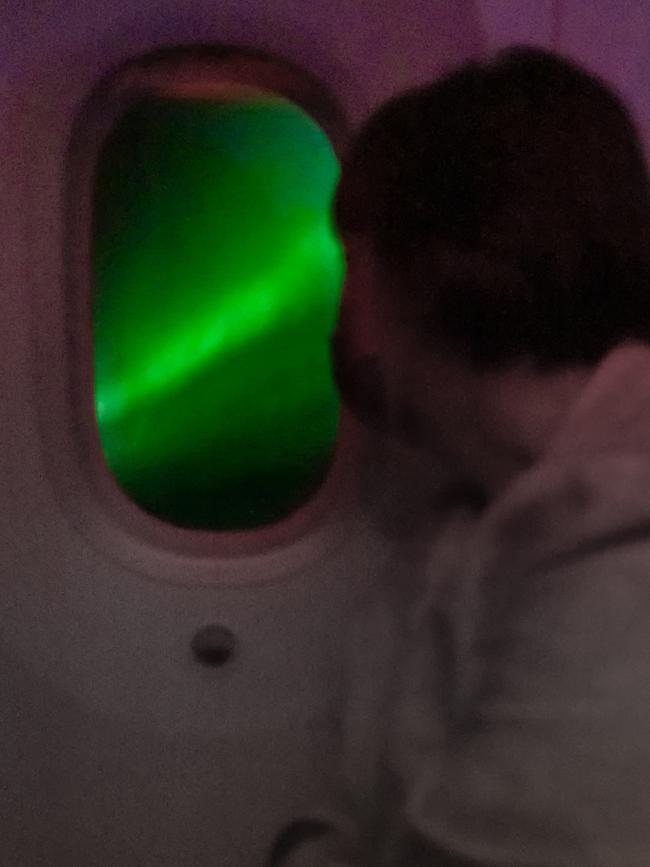
I’m glued to my window, camera at the ready, when a faint white mist looms slowly into view. I click off a few frames. They are blurry but unmistakably green on my camera’s playback screen. We have arrived in the auroral zone.
The next couple of hours are spent “chasing” auroras through the night sky. We see sinuous ropes of light dancing before the stars, and sheer curtains wafting as though caught in a gentle breeze. There are vivid dense blobs and whispy trails and it suddenly makes sense that this sight could inspire spiritual tales of gods and monsters.
Halfway through, crew co-ordinate the designated seat swaps and I trade places with my neighbour in the centre row to watch the show from afar. As the display draws to a close, around 2.30am, I succumb to the need for sleep, grateful for a lie-flat bed.
We land back in Sydney at 6.15am, a little befuddled and bleary-eyed but elated. What just happened? Where have we been? To another world.
In the know
Chimu Adventures’ Southern Lights by Flight expeditions depart Melbourne on April 30, Brisbane on May 28 and Perth on June 25. There are six seating categories; from $1295 for economy class with limited view to $6995 in premium business. Halfway through the aurora viewing time, passengers swap seats to ensure everyone gets time to see the lights. The operator also has a number of flights over Antarctica, including one that departs Melbourne on New Year’s Eve; from $1195.
Penny Hunter was a guest of Chimu Adventures.


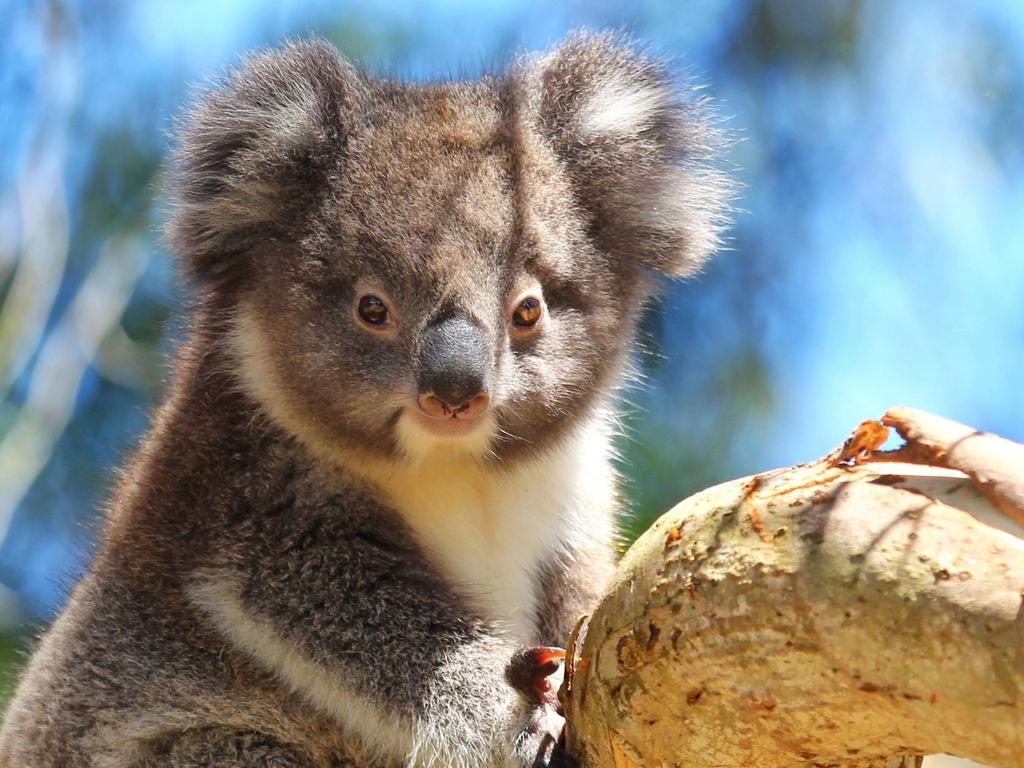
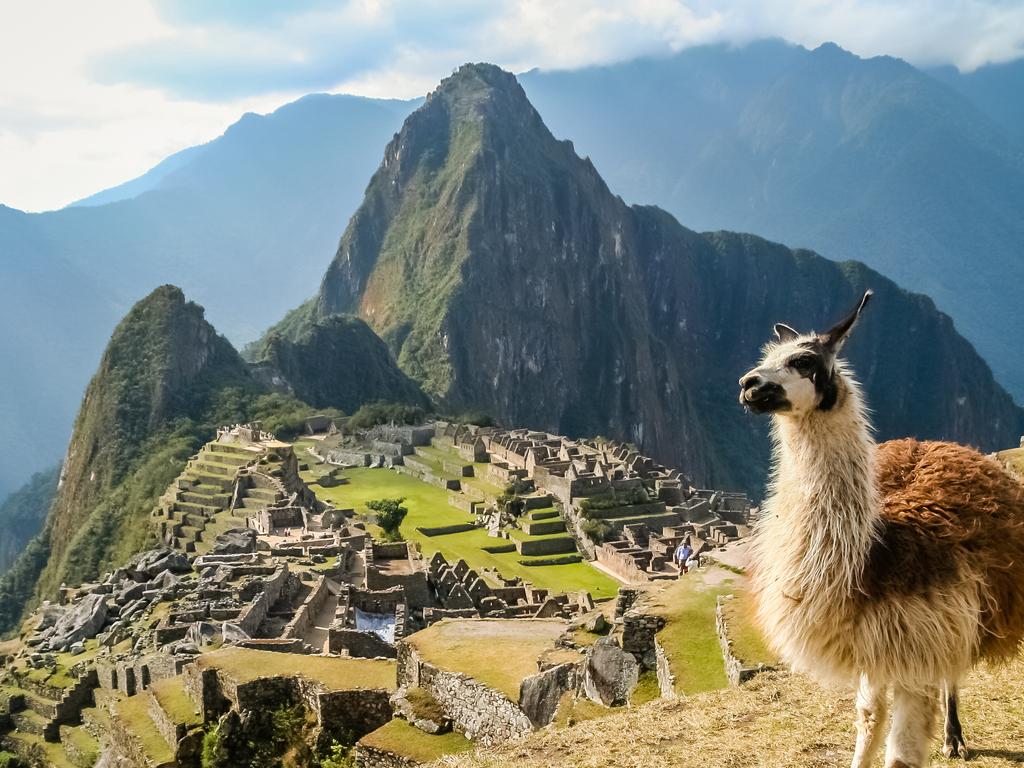

To join the conversation, please log in. Don't have an account? Register
Join the conversation, you are commenting as Logout